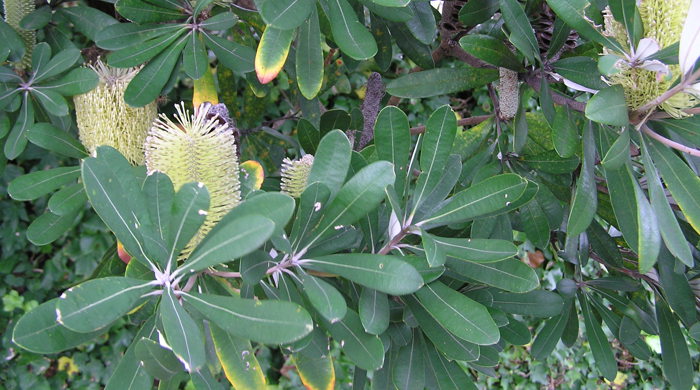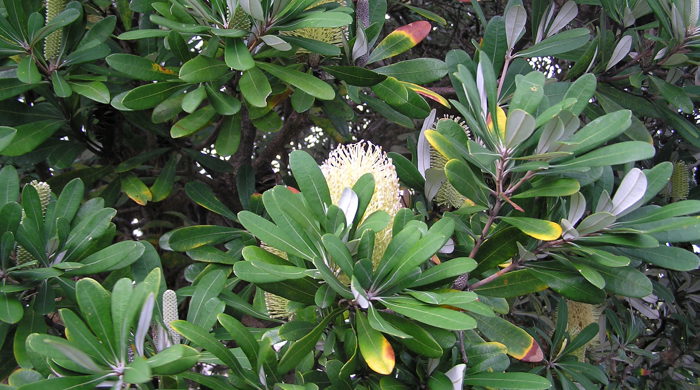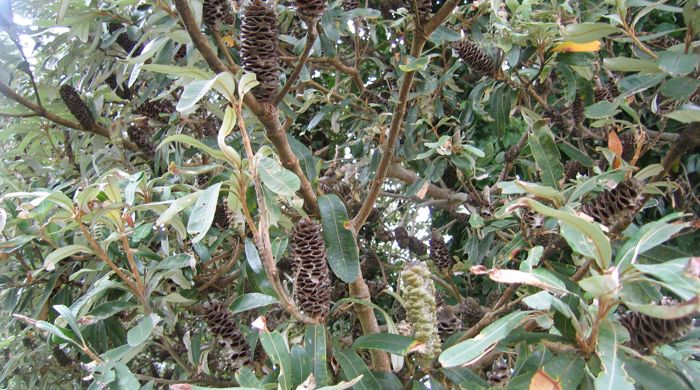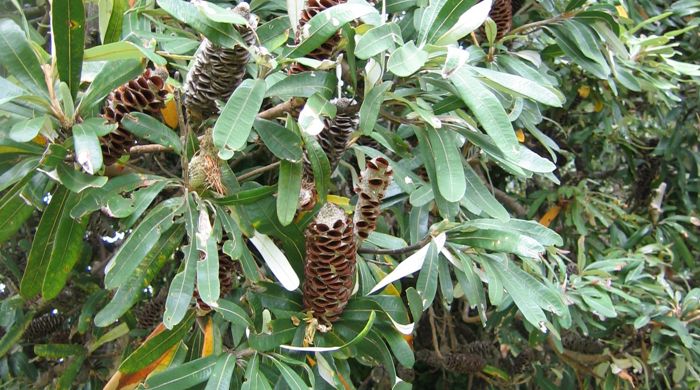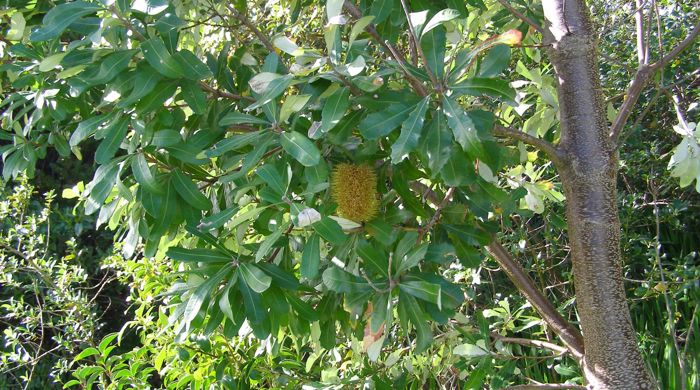Banksia integrifolia
Coast banksia
Also known as:
Coastal banksia
Family: Proteaceae
Origin: Australia
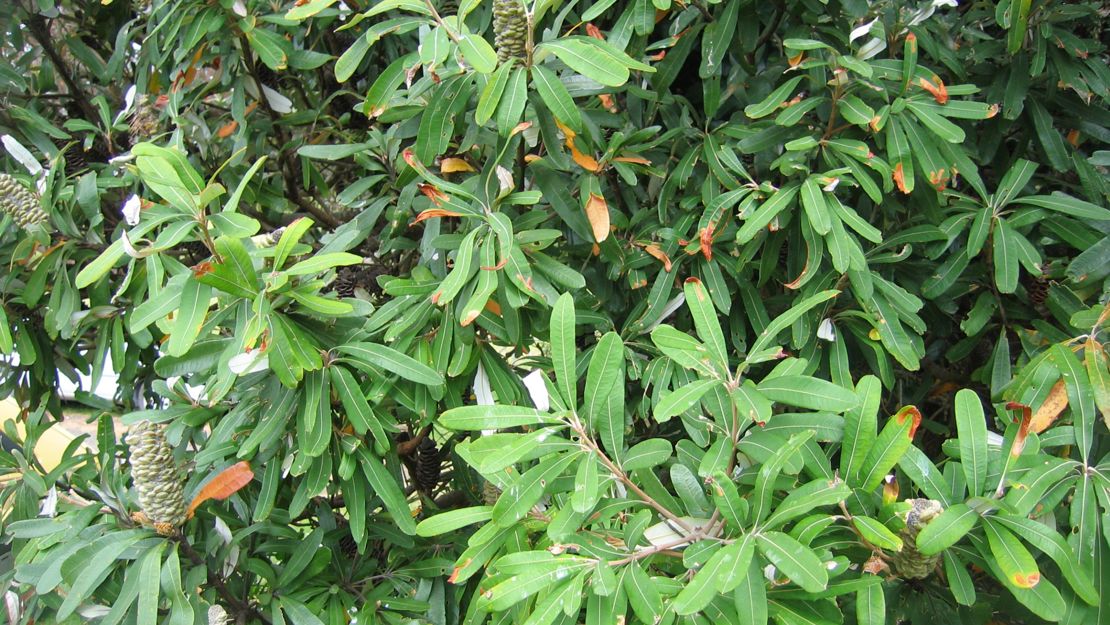
Regional Pest Management Plan (RPMP) status
- Whole region — Sustained control
- Waitākere Ranges Heritage Area priority status
- Hauraki Gulf Controlled Area Notice pest
- Parkland with Significant Ecological Areas — Site-led (on-park and buffer)
General description
Large shrub or tree < 15 m tall. Stems are upright with rough bark. Leaves are narrow, elliptic, < 15 x 2.5 cm, toothed when young and entire when mature, with a dark green top and white underside.
Flowers are pale yellow/green and borne in broadly cylindrical, erect inflorescences. Fruiting cone is woody, persistent on tree, has several hard and woody valves and contains black seeds.
What you need to know
To help protect our environment:
- You must not breed, distribute, release or sell coast banksia within the Auckland region.
- You must not plant coast banksia within the Auckland region, unless you are transferring an existing plant on your land to another location within the boundaries of the same property.
- You must destroy any coast banksia on land that you occupy if it has been planted in breach of the above rules and you are directed to do so by an authorised person.
Auckland Council will manage coast banksia in buffer areas of parks, where coast banksia is being managed, to an extent that protects the values of that parkland. If you wish to help protect your local parkland, you are encouraged to control or remove any coast banksia on your land and plant a better alternative instead.
View a map of park buffers.
To find out more about how we’re protecting Auckland’s parkland from pest plants, visit our pest plant buffer pages.
Habitats
Lowland and coastal sites, roadside banks, dry and open forest, forest margins, pasture, scrubland, wasteland, sandy soils.
Dispersal
Seeds dispersed by wind.
Impact on environment
Shades out existing vegetation and transforms habitat.
Control
Site Management
Follow up treated areas 3 times per year. Encourage natural regeneration of native plants or replant treated areas where possible after 2-3 treatments to establish dense ground cover and minimise reinvasion.
Recommended approaches
Physical control
Method: Dig out.
Plant parts requiring disposal: All parts.
Disposal options: Remove to greenwaste or landfill.
Biocontrol
Biocontrol is currently not available for this species.
Community agrichemical control recommendations
No qualifications: Cut stump and paste freshly cut base of stems with metsulfuron gel.
Basic Growsafe certified: Cut stump and spray freshly cut base with 5g metsulfuron-methyl per 1 L of water.
Certified Handler/Experienced agrichemical user: Drill and inject trees with 10g metsulfuron-methyl per 1L of water if safe to do so. Drill 18mm holes (tangentially angled downwards) in a spiral up the trunk.
For 50mm stems drill one hole. For 100mm stems drill two holes. For larger stems drill holes 150mm apart. Foliar spray seedlings with 5g metsulfuron-methyl per 10L of water and 20ml penetrant.
Safety notes
Large trees must not be drilled that are closer than 1.5 times the height of the tree from paths, walkways and property.
Trees over 4 metres in height should be removed by a qualified arborist.
Caution: When using any herbicide or pesticide please read the label thoroughly to ensure that all instructions and safety requirements are followed.
